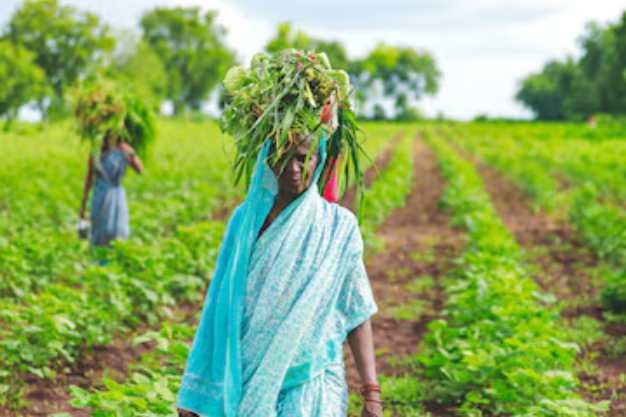Latest News
Economic Survey 2025 | Nirmala Sitharaman Unveils Key Growth Insights & ₹1.52 Trillion Agri Boost

Overview of this Blog
The Economic Survey 2025 highlights India’s strong agricultural growth, with a 3.5% rise in Q2. The government supports farming through schemes like SMAE, KCC, and e-NAM. Focus areas include irrigation, food processing, exports, and climate resilience. Increased budget allocation and financial help aim to boost farmers’ productivity and income.

The Economic Survey 2025 Delivered in Parliament on Friday by Nirmala Sitharaman, the Union Finance Minister, which was presented to Parliament, shows that the agricultural sector in India keeps performing at levels constantly greater than the trend levels.
The poll showed that the agriculture sector grew 3.5% in the second quarter of the fiscal year 25 (XY25), therefore underlining the major part it performs in the Indian economy.
Government encouragement of agricultural growth
The government is focussing its efforts on raising agricultural production by means of programs like the Sub-Mission on Agricultural Extension (SMAE), which seeks to enhance farming techniques, distribute knowledge, and promote sustainability, thereby strengthening agricultural productivity.
“Agricultural extension is essential in the dissemination of knowledge; the government is implementing the Sub-Mission on Agricultural Extension (SMAE) and its various components to enhance productivity and promote sustainable agricultural practices;,” the survey said. “The spread of knowledge depends much on agricultural extension.”
Economic Survey 2025 Industries include farming, cattle, and fishing promote development
Furthermore emphasised by the study were high-value sectors including horticulture, cattle, and fisheries as main drivers of India’s overall agricultural growth.
Nirmala Sitharaman here. Real-time data from the Economic Survey 2025 shows India still boasts the highest manufacturing PMI growth. The Economic Survey says India needs 7.8 million non-farm jobs yearly to sustain its development.

The Economic Survey 2025 shows that inflation is still strong even if food prices are declining worldwide.The Union Budget 2024-25’s Rs 1.52 trillion allocation for the agriculture and allied sector supports this momentum; this is a significant increase from the Rs 1.22 trillion given in the 2023–24 budget, according to the poll.
If farmers want to access markets and loans, they can Given the importance of financial help, the study underlined the effect of the Kisan Credit Card (KCC) initiative, which has considerably enhanced farmers’ access to institutional credit. This was done in understanding the value of financial assistance. As of March 2024, 77.5 million KCC accounts were in use; the outstanding loan sum came to 9.81 trillion rupees.
Apart from this, the government is running initiatives like the Kizan Rin Portal (KRP) and the Modified Interest Subvention Scheme (MIS) to improve credit flow and ensure timely loan distribution respectively. The poll also underlined the need of keeping pricing stability and improving the infrastructure of the market. Thanks to the e-National Agriculture Market (e-NAM) platform, which has given farmers direct access to competitive pricing and has reduced the number of middlemen, digital commerce has grown.
Maintaining over time food grain and agricultural output
According to the survey’s findings, Kharif food grain output in 2024 would rise from the output of the year before to 164.705 million metric tones (LMT). To lower losses and raise efficiency, it also underlined the need of keeping efforts in irrigation, enhancing soil health, and post-harvest storage.
The National Mission on Sustainable Agriculture (NMSA) is significantly helping to promote farming more resistant to the consequences of climate change. By spreading micro-irrigation across the Per Drop More Crop (PDMC) projects, one is ensuring better water management in view of mounting concerns about climate change.
Rising food processing as well as exports
With agri-food exports reaching $46.44 billion in FY24, making 11.7% of India’s overall exports, the survey underlined the food processing industry as a major driver of economic development. The survey produced these among its results.
The government is implementing initiatives including the Pradhan Mantri Kisan Sampada Yojana (PMKSY), which aims to modernize the infrastructure used for food processing, therefore helping to improve this industry. The Production Linked Incentive Scheme for Food Processing (PLISFPI) is boosting global competitiveness and drawing investments in value-added agricultural products, therefore increasing their relevance.

Fixing problems with climate change
The poll also underlined how important climatic variability and declining water supply still provide major obstacles for the agriculture sector. The government is giving research on climate-resistant crops top attention in order to increase the resilience of farms, hence extending the use of micro-irrigation, and promoting digital solutions. Farmer Producer Organizations (FPOs) are being encouraged to boost collective negotiating power, lower costs, and open markets so small and marginal farmers may take advantage of economies of scale.












